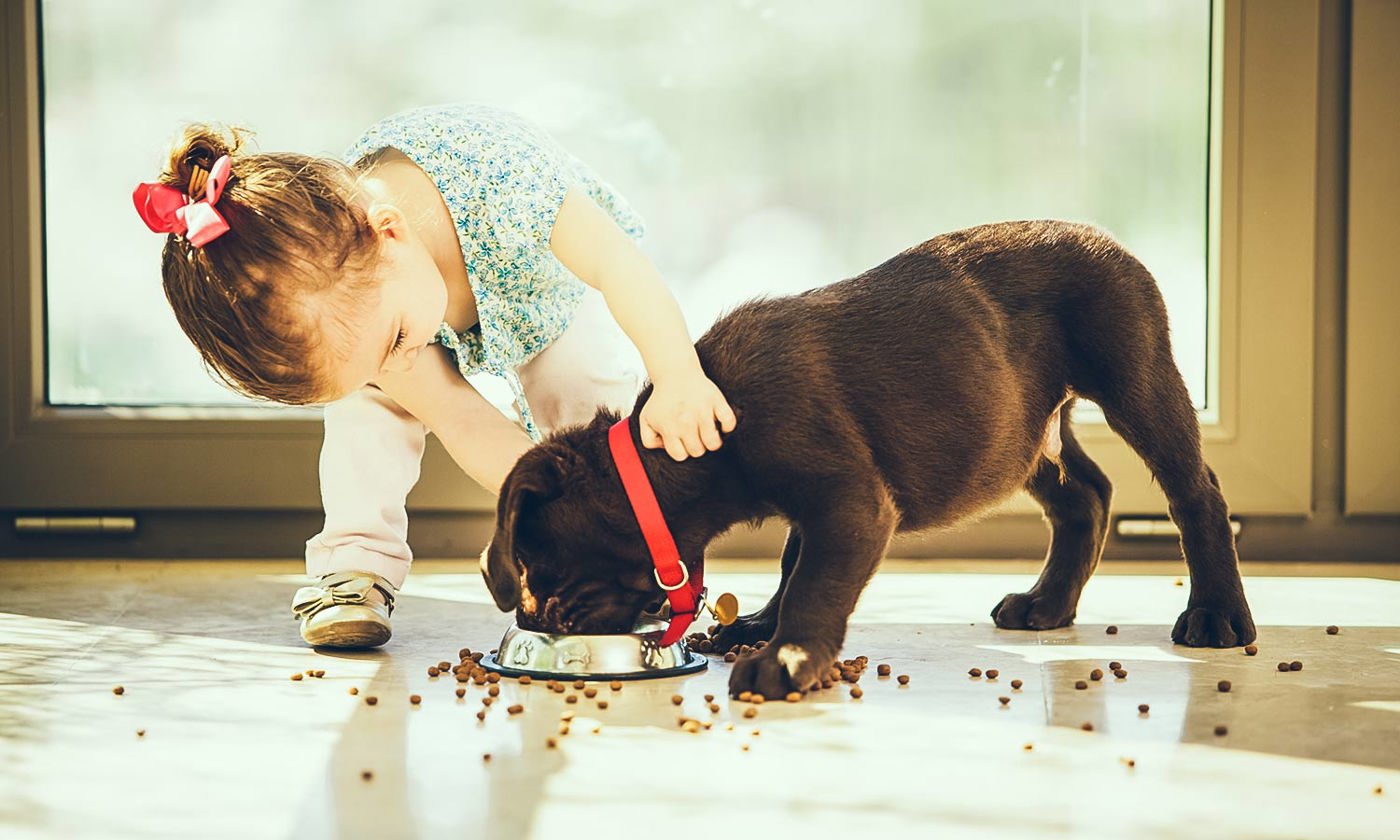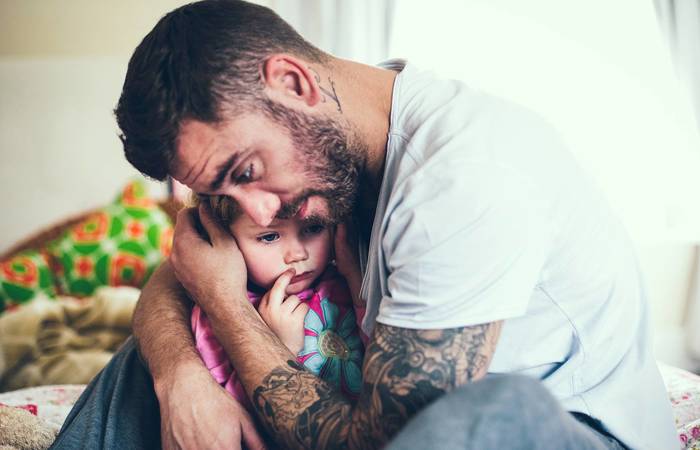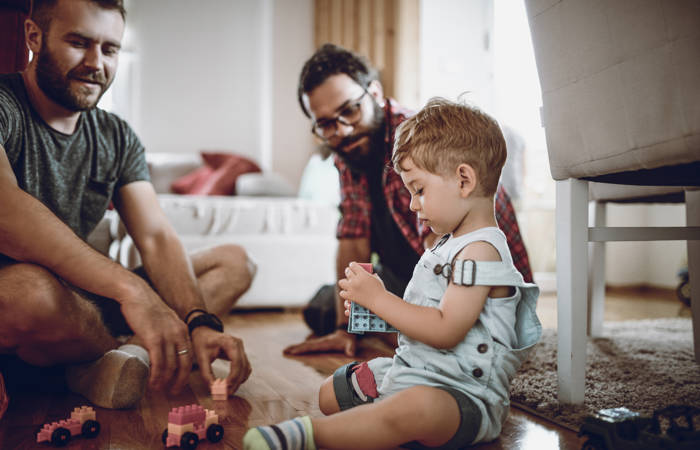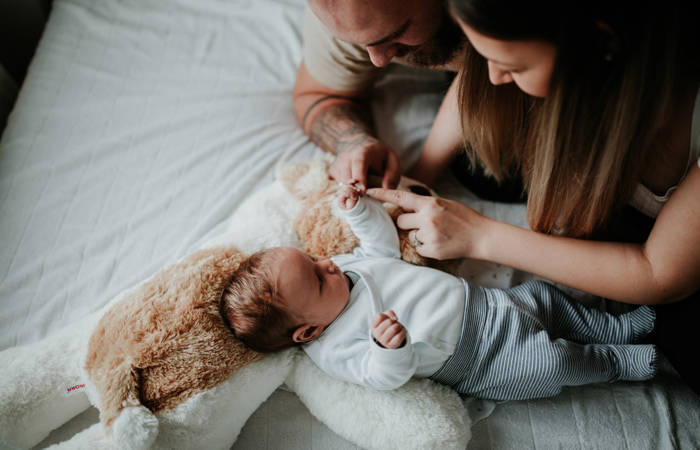Like what you see?
Sign up to receive more free parenting advice.
Thank you for subscribing to our newsletter!
Child Development

Credit: iStock.com/Antonio_Diaz
Adults who have grieved the loss of a beloved family pet know what a heart wrenching time it can be. But for a child, it can prompt not just a sense of loss but of confusion about death and how they should be dealing with emotions.
Some parents tell a white lie - pretending that the child’s pet has gone missing, or is now living on a farm – because explaining death to a child can be hard but Dr Jade Sheen, Associate Professor in Psychology at Deakin University, believes the best way to deal with a child who is upset about the loss of a pet, is to tell the truth as best you can.
“It’s always going to come down to personal choice but, for me, I prefer to be open and transparent with my children. Whilst the concept of death and illness is very hard, if we can put it in an age appropriate way, we can provide a truthful response,” Dr Sheen says.
Sharing your feelings
And should a parent hide their own tears from their child?
“I don’t think so. I believe parents shouldn’t completely block their own feelings about the loss of the pet in front of their children. It would be a good thing for children to see their parent cry or get upset about things,” Dr Sheen says.
“The key point here though is that the child doesn’t feel responsible for managing the parents’ emotions. So, if they ask, ‘Why are you crying?’ you could say, ‘I’m upset about the dog, but that’s okay because I loved her very much and when we lose something its normal to feel upset.’”
When it comes to a child’s understanding about the permanence of death, Dr Sheen believes children from the age of three or four can understand the concept of something being irreversible.
“Children of that age can certainly have a degree or some understanding about the idea of death and that it’s irreversible. But whether that understanding is the same as we have as adults is debatable.
“One way to help your child cope is through play. Children use play to learn and to cope with feelings. So I’d advise parents to use whatever positive outlet that can work with your child to engage them.”
I’m a big fan of rituals and creating your own family ritual is very helpful because it shows we’re dedicating time to talk about the process or the lost one, whether a pet or a person.Dr Liz Westrupp
Stay up to date with the latest news and articles from First Five Years
Thank you for subscribing to our newsletter!
Psychologist Dr Danielle Einstein says the death of a pet is an opportunity for parents to model being okay with emotions.
“It’s about letting your child know that life will bring things that will make us sad and that life isn’t always wonderful,” Dr Einstein says.
“You can talk about how important the pet was to the family and that it’s okay to miss your pet and say things like, ‘Wasn’t it lovely when he used to give you cuddles at night?’. Just allow your child to talk when they want to and not to feel that we can’t feel sad or we shouldn’t cry.
“It’s important to be permissive about how we handle our emotions and make the whole experience very normal.”
Helpful to be open about death
Psychologist Dr Liz Westrupp from Deakin University says Western society isn’t comfortable talking about death. However, it’s understood to be more helpful for children if we speak about death more openly.
“It’s very important that any talk about death is age appropriate and we aren’t providing too many details that might be distressing to a child. My advice is to follow the child’s lead. Try to answer their questions as plainly as possible and try to do a genuine job of answering their questions,” Dr Westrupp says.
“Different parents will have different religions or personal beliefs about death and the afterlife. What can be very useful for children is differentiating what is fact and what is belief and emphasising that in their life they will come across people who have different beliefs. It’s important to show there’s not just one way of thinking about death.”
Parents will have to exhibit a tricky balancing act between being strong for their child but also showing that they are feeling emotional about losing the pet too.
“As parents we accept that we might not always be strong, but we always want to be the bigger, stronger person in our child’s life. That way they can feel confident they’ll be supported, and we’ll be able to look out for them,” Dr Westrupp says.
“Emotions are very important, and you should talk to your child about how everyone feels sad and that it’s important for everyone to be able to cry. It’s good to talk about your own feelings of sadness as well. If you’re able to, try to model your own ability to manage your emotions, expressing them appropriately and show your child that you are still in control.”
The value of goodbye rituals
Sometimes, when a pet dies, families have a ‘goodbye ritual’, whether it be a burial or other ways to farewell the pet. Dr Westrupp says establishing family rituals around a death can have a positive impact.
“I’m a big fan of rituals and creating your own family ritual is very helpful because it shows we’re dedicating time to talk about the process or the lost one, whether a pet or a person.
“We’re showing that it’s a normal process of grief, a way to get together and talk in a way that will help the child process their own feelings of grief,” Dr Westrupp says.
“The other issue is if the pet had been euthanised. I think it’s good to discuss that too, as it’s just part of the reality of life and death. There’s no reason not to tell the child the truth.
“While some children aged under five might not have a very clear sense of what death means, around the age of four, they’re beginning to understand that; and some children will have an understanding of death much earlier.”
Some families like to get a ‘replacement pet’ very quickly after the family pet dies, and Dr Sheen says there is no right or wrong thing to do in the aftermath of the loss.
“I think that everyone will have a different thought about whether to replace the pet right away or not. The key issue is that the child doesn’t have a sense that a new pet is a replacement for the late pet. Each pet, just like each person, is unique and has its own personality and character, its own unique needs and wants,” Dr Sheen says.
“Provided that the new pet is presented as its own unique animal and not a replacement, then the timing doesn’t matter so much, its more about how you explain the arrival of the new pet to your child.”







